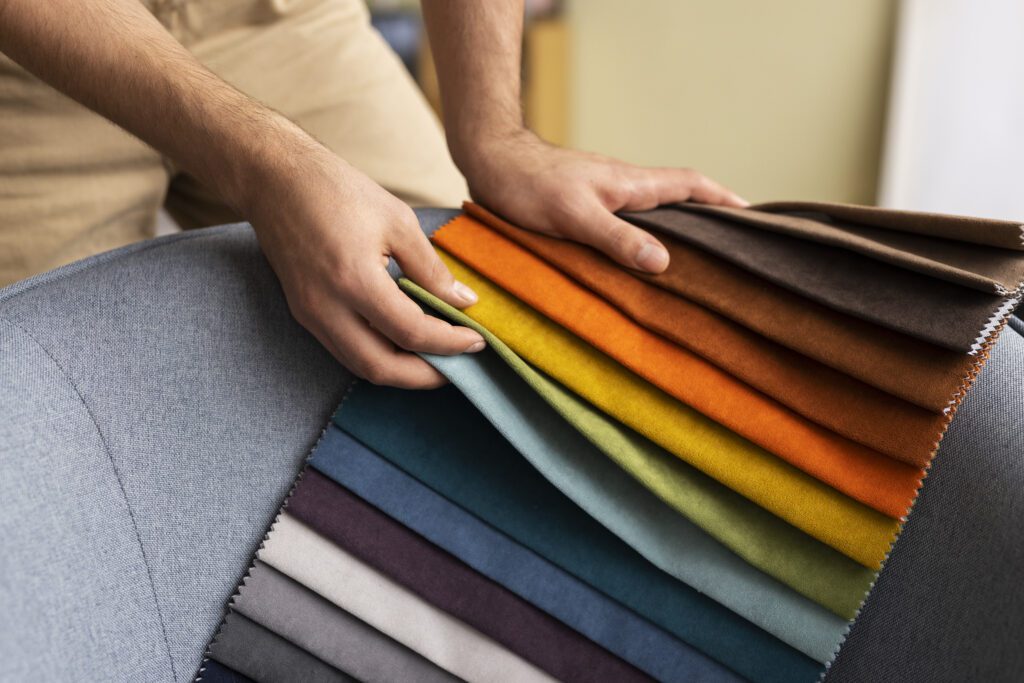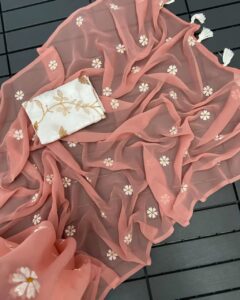
Selecting the right fabric for your project is essential, and understanding fabric weights is a key part of this process. Fabric weights influence the look, feel, and durability of your creation. In this guide, we’ll explore different fabric weights and their uses, helping you make informed choices for your sewing, crafting, or fashion projects.
What is Fabric Weight?
Fabric weight refers to the heaviness or thickness of a fabric, usually measured in grams per square meter (GSM) or ounces per square yard (oz/yd²). The weight affects the fabric’s drape, durability, and suitability for various applications. Let’s dive into the categories of fabric weights and their common uses.
Lightweight Fabrics (0-150 GSM)
Lightweight fabrics are soft and airy, ideal for projects needing breathability and a gentle drape.
Common Uses:
- Apparel: Summer dresses, blouses, lingerie, and scarves.
- Home Decor: Sheer curtains and lightweight tablecloths.
- Crafting: Quilting and delicate fabric art.
Popular Lightweight Fabrics:
- Chiffon: Perfect for evening wear and flowing dresses.
- Organza: Ideal for overlays and decorative elements.
- Voile: Great for summer clothing and lightweight curtains.
Medium-Weight Fabrics (150-300 GSM)
Medium-weight fabrics offer versatility and durability, suitable for a range of applications. They provide more structure than lightweight fabrics while still being comfortable.
Common Uses:
- Apparel: Shirts, skirts, trousers, and dresses.
- Home Decor: Cushion covers, curtains, and table runners.
- Crafting: Tote bags and aprons.
Popular Medium-Weight Fabrics:
- Cotton: Versatile and widely used in clothing and home decor.
- Linen: Ideal for summer garments and home textiles.
- Denim: Suitable for jeans, jackets, and bags.
Heavyweight Fabrics (300+ GSM)
Heavyweight fabrics are thick, sturdy, and long-lasting. They’re best for projects requiring durability and structure.
Common Uses:
- Apparel: Winter coats, jackets, and heavy trousers.
- Home Decor: Upholstery, heavy drapes, and rugs.
- Crafting: Backpacks, duffle bags, and robust craft projects.
Popular Heavyweight Fabrics:
- Canvas: Great for outdoor gear, bags, and upholstery.
- Wool: Ideal for winter clothing and heavy blankets.
- Twill: Used for durable workwear and upholstery.
Choosing the Right Fabric Weight
Selecting the appropriate fabric weight depends on your project’s specific requirements. Here are some tips to help you choose the right fabric weight:
- Consider the Project: Identify the type of item you’re making and its intended use. Lightweight fabrics are great for summer clothing, while heavyweight fabrics are suitable for winter wear and upholstery.
- Think About Drape: Determine how you want the fabric to drape. Lightweight fabrics offer a soft, flowing drape, while heavyweight fabrics provide structure and stability.
- Assess Durability: For items that need to withstand wear and tear, choose medium to heavyweight fabrics. For delicate items, lightweight fabrics are sufficient.
- Climate and Season: Match fabrics to the climate and season. Lightweight fabrics are breathable for warm weather, while heavyweight fabrics provide warmth in colder climates.
Conclusion
Understanding fabric weights and their uses is vital for any sewing or crafting project. By choosing the appropriate fabric weight, you can ensure your project meets your desired look, feel, and functionality. Whether you’re creating a breezy summer dress or a sturdy tote bag, knowing the difference between lightweight, medium-weight, and heavyweight fabrics will help you achieve the best results.
Remember, the key to a successful project lies in choosing the right fabric weight for your specific needs. Happy sewing!













